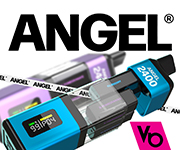Gonloopy
Veteran
- Joined
- Apr 7, 2013
- Messages
- 5,627
For infoFor those that are not aware of Dr Farsalinos he is currently one of the most prominent supporting voices in the vaping world. Just came across this which he put out a link to on FB earlier
Implementing a realistic but substantial regulation on e-cigarettes
A proposal for public health authorities
By Dr Farsalinos
By Dr Farsalinos
Negotiations within EU concerning regulation of e-cigarettes are still underway but close to the end. Unfortunately, current proposals (displayed in detail by Clive Bates) are so much different compared to those voted by the EU Parliament that one wonders why was the will of the MEPs completely ignored and bypassed. In any case, the new proposals are extremely damaging for public health. They will definitely drive vapers back to smoking and will reduce any chance of smokers switching to e-cigarettes as a significantly less harmful alternative. Regulators should realize that the intention to ensure quality products in the market is not fulfilled by banning most of the products that current consumers use. The same goal can be achieved by introducing some very simple and realistic rules to the article 170 voted by the MEPs in October.
It is absolutely essential that e-cigarettes are tested and that quality standards are implemented. This can be achieved without strict regulation but by applying pragmatic, cost-effective and feasible regulations. These should include:
Documentation for the use of Pharma-grade (USP or Ph.Eur.) base ingredients (propylene glycol, glycerol and nicotine). This can be provided by the manufacturers, based on the documentation they receive from their suppliers. Anything that is not USP or Ph.Eur. grade should not be used.
Documentation for the use of FEMA-approved flavorings. This can be provided by the manufacturers, based on the documentation they receive from their suppliers. No other flavorings can be used.
Ban on the use of any other stimulant substances added to nicotine-containing liquids.
Documentation on the type of materials used in the atomizers (plastics, metals). This should be provided by the manufacturers of atomizers, and should include all materials used (body of the atomizer, resistance and wick, mouth-piece etc). Refillable atomizers should be available in the market.
Use of child-proof packaging for e-liquids.
Proper labeling for all e-cigarette products. Nicotine-containing liquids should be labeled as toxic when ingested or in contact with skin. Warnings about the addictive potential of nicotine should be included, as well as information that the product should be used as an alternative to smoking by smokers only.
Testing of e-liquids and vapor for the presence of toxic chemicals. A pre-determined relevant list of HPHCs (Harmful and Potentially Harmful Chemicals), similar to the FDA requirements for tobacco products, can be prepared. All manufacturers should be obliged to provide results of their tests both in liquid and vapor form. Obviously, some acceptable levels should be determined; the complete lack of contaminants currently proposed is not seeing even in pharmaceutical nicotine products (or any other consumer product in fact).
Adding the above mentioned rules to Article 170 voted by the MEPs would represent the best possible regulation for e-cigarettes. Such a regulation would provide consumers and public health authorities with useful information and wouldpromote safety. In fact, these are the highest standards that can be implemented by any form of regulation. It is based on science and not on internal interests of the e-cigarette or any other industry. At the same time it would not destroy the variability and accessibility of products, both of which being important determinants in e-cigarettes’ potential as smoking substitutes. I hope that regulators will understand the potential of e-cigarettes to save millions of lives.












